Project Details
Work to Date
The objective of this project is to improve an electromagnetic motor through additive manufacturing using soft ferromagnetic material. Our primary market is our sponsor, Sandia National Labs.
Secondary markets include the High-Performance Materials Institute (HPMI) at the FAMU-FSU COE. The project stakeholders are Sandia National Labs and the FAMU-FSU COE. Our main assumption is that the project does not involve improving the 3D printing method itself.
The customer (referred to here as the sponsor) is Sandia National Labs with Andrew Kustas as their representative. A meeting was held with the sponsor on October 4th 2022, and the following questions were asked:
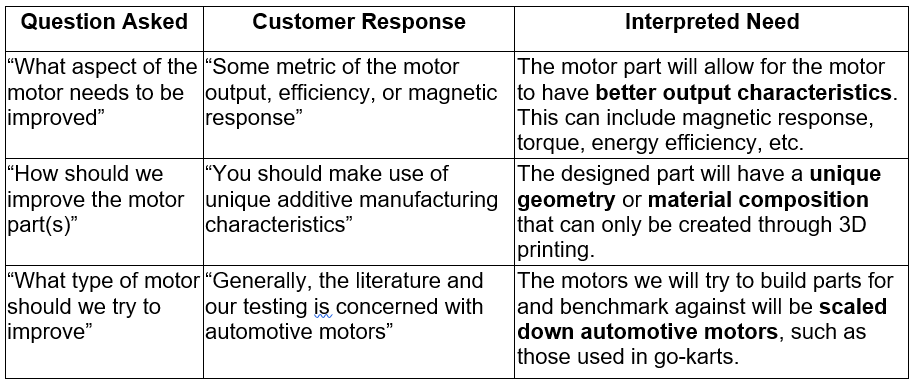
Andrew left our scope largely unconstrained, and explicitly told us to select which output characteristics to improve and what type of motor to improve. The project’s only constraint is that metal additive manufacturing is used.

Andrew left our scope largely unconstrained, and explicitly told us to select which output characteristics to improve and what type of motor to improve. The project’s only constraint is that metal additive manufacturing is used.
Rotor designed with a honeycomb structure.
This rotor concept is designed using biomimicry as the basis for its concept generation. The honeycomb structure allows for a distribution of force through the motor that should let it withstand the same forces before failure with a smaller moment of inertia.
This decreased moment will allow the rotor to rotate at a higher angular velocity compared to the original motor part, as the energy required to induce motion will be lessened.
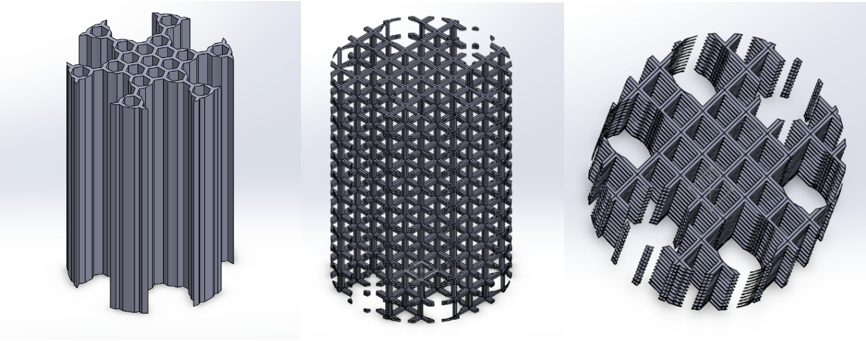
Hiperco slits in rotor. Our second concept entails using Hiperco slits to concentrate the direction of the magnetic field, arranged as per Figure 2. These slits should concentrate the magnetic field direction, so that there is less energy loss from the field acting outside of the designed part. This will allow for an equal response from the motor at a lower energy input, as the magnetic field will be more concentrated in the direction necessary to cause the motor output.

Using topology optimization to create motor parts. Topology optimization will allow for us to design parts with ideal geometries given the dimension measurements of the original motor part. Using these measurements and the boundary conditions for the forces acting on the motor part, we can design parts that are optimized to have more beneficial mechanical and electromagnetic properties while withstanding the same forces as the original component. There is already a framework in place for this mechanical property optimization, so we will optimize our motor part to have a lower moment of inertia so the same applied magnetic field (and energy) will produce a greater output in the motor.


Hiperco slits in rotor. Our second concept entails using Hiperco slits to concentrate the direction of the magnetic field, arranged as per Figure 2. These slits should concentrate the magnetic field direction, so that there is less energy loss from the field acting outside of the designed part. This will allow for an equal response from the motor at a lower energy input, as the magnetic field will be more concentrated in the direction necessary to cause the motor output.

Using topology optimization to create motor parts. Topology optimization will allow for us to design parts with ideal geometries given the dimension measurements of the original motor part. Using these measurements and the boundary conditions for the forces acting on the motor part, we can design parts that are optimized to have more beneficial mechanical and electromagnetic properties while withstanding the same forces as the original component. There is already a framework in place for this mechanical property optimization, so we will optimize our motor part to have a lower moment of inertia so the same applied magnetic field (and energy) will produce a greater output in the motor.

Concept selection for our designed parts will occur based on the output characteristics of the motor. We have narrowed the scope down to emphasize the importance of a few electromagnetic and mechanical output characteristics. For the
mechanical characteristics, we will analyze the output motion of the motor after the use of our designed parts. Measuring the RPM output, we can compare the original and designed motor characteristics. Given the same input energy, a change in motor output velocity will allow
us to directly compare the motor efficiency, which can be done using a tachometer.
We will disassemble the motor and select a part to improve based on our selected performance characteristics and predicted ease of manufacturing. We must also develop methods of testing the magnetic properties of the motor. For measuring
the shaft RPM of the motor, a tachometer and reflective tape can be used. The magnetic flux density is more challenging to measure, but this can be done using a magnet with known properties attached to a spring. If the stiffness k of the spring is known, we can measure the force
applied by the magnetic field by measuring the spring displacement. Using that displacement, the magnetic flux density can be determined, for both the original motor part and the designed part for comparison.
To measure the direction of the magnetic field, we will scatter metal filings on a sheet of paper and induce a magnetic response from the motor part above it. The resulting pattern of metal filings on the sheet of paper will allow us to visualize the field. The fields created by the two parts can then be compared along the axis that affects shaft rotation.
We will apply topology optimization using nTopology to the mechanical properties of the motor part in order to lower its moment of inertia, therefore decreasing the power required to achieve the same response in the motor. The software also has a built-in additive manufacturing toolkit, so the advantages of using AM can reach their full potential.
To measure the direction of the magnetic field, we will scatter metal filings on a sheet of paper and induce a magnetic response from the motor part above it. The resulting pattern of metal filings on the sheet of paper will allow us to visualize the field. The fields created by the two parts can then be compared along the axis that affects shaft rotation.
We will apply topology optimization using nTopology to the mechanical properties of the motor part in order to lower its moment of inertia, therefore decreasing the power required to achieve the same response in the motor. The software also has a built-in additive manufacturing toolkit, so the advantages of using AM can reach their full potential.
Using the Vevor motor, we created a CAD model of the rotor to base our designs on. The CAD model was then imported into nTopology, where topology optimization was attempted but wasn't very effective without considerations for magnetic
properties in the program. The design generated had very little attachment between the shaft and rotor body. As a result, lightweighting was used next to create a rotor design that has 62% less volume than the original.
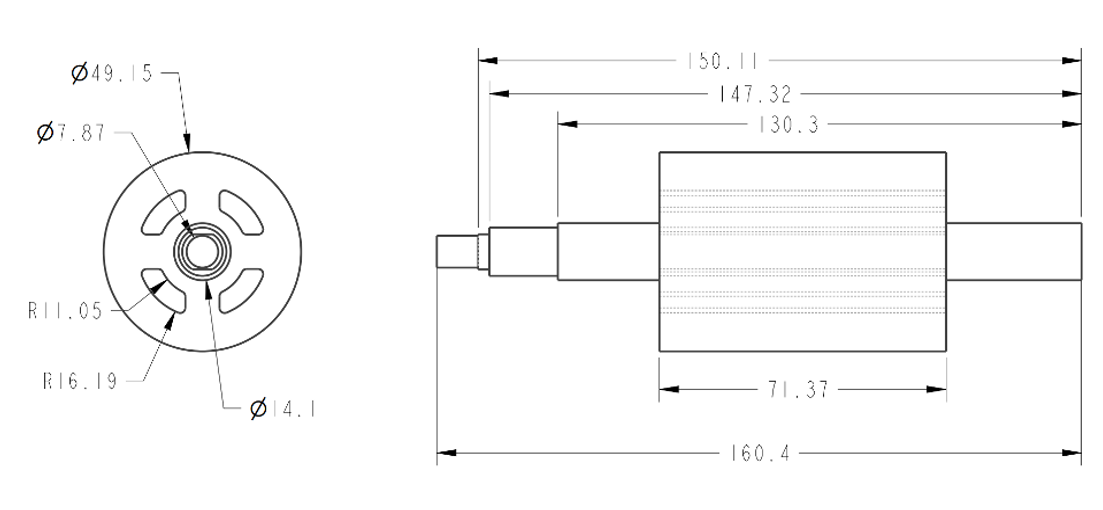
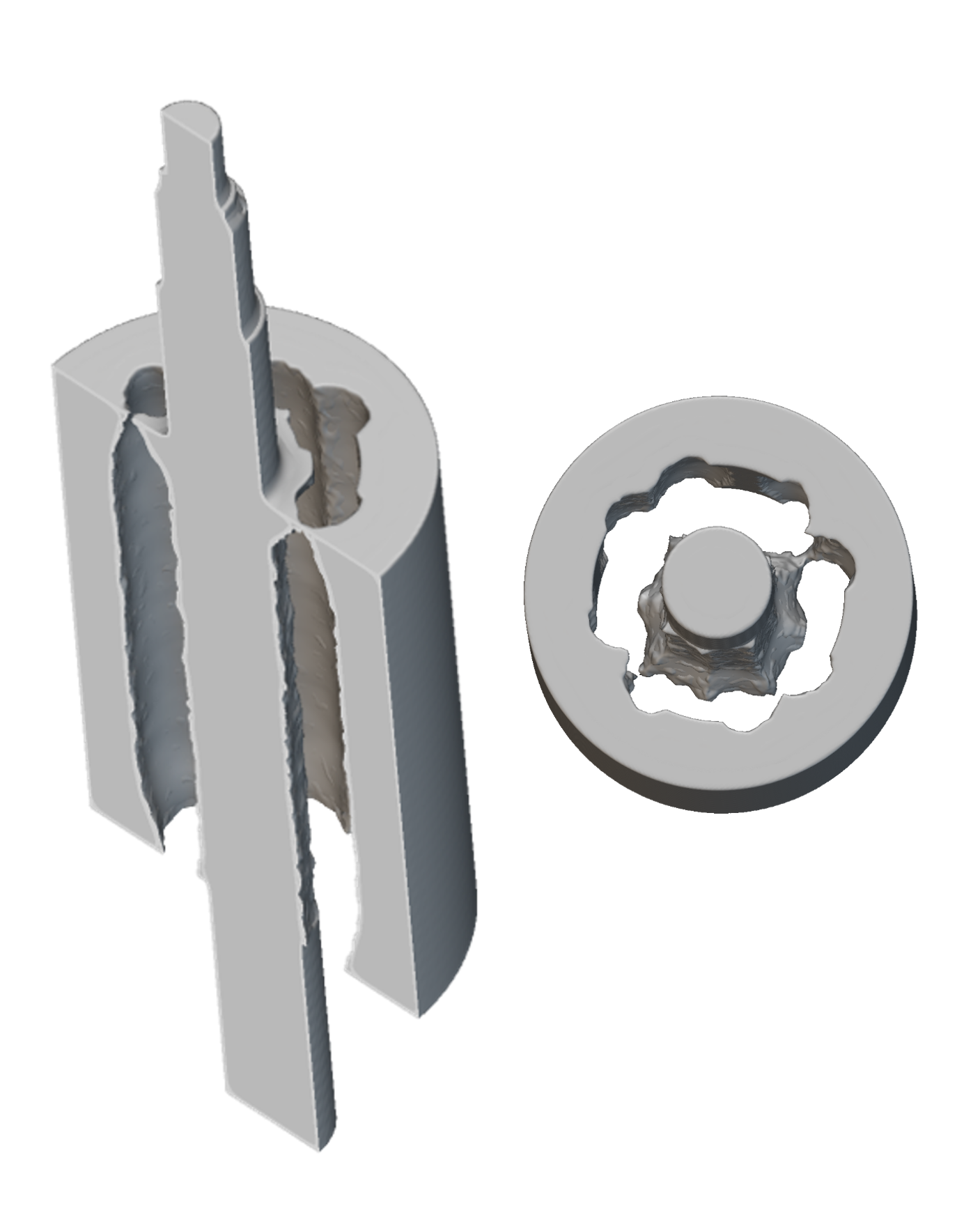
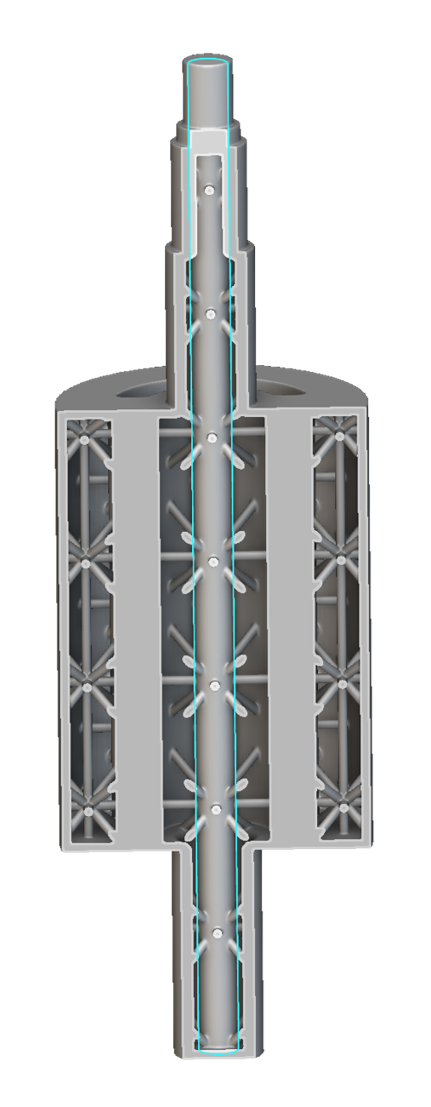
a. CAD model of original rotor b. Topology optimized design c. Lightweighted design



We performed finite element analysis to simulate mechanical stresses on the motor and to obtain the von Mises stresses, which were used in the topology optimizations. A similar studies were performed in both SolidWorks and COMSOL, but had
differing results due to how the boundary conditions are applied in each program. SolidWorks allows the placement of torque, whereas in COMSOL torque must be defined through opposing point forces paired with a distributed load.
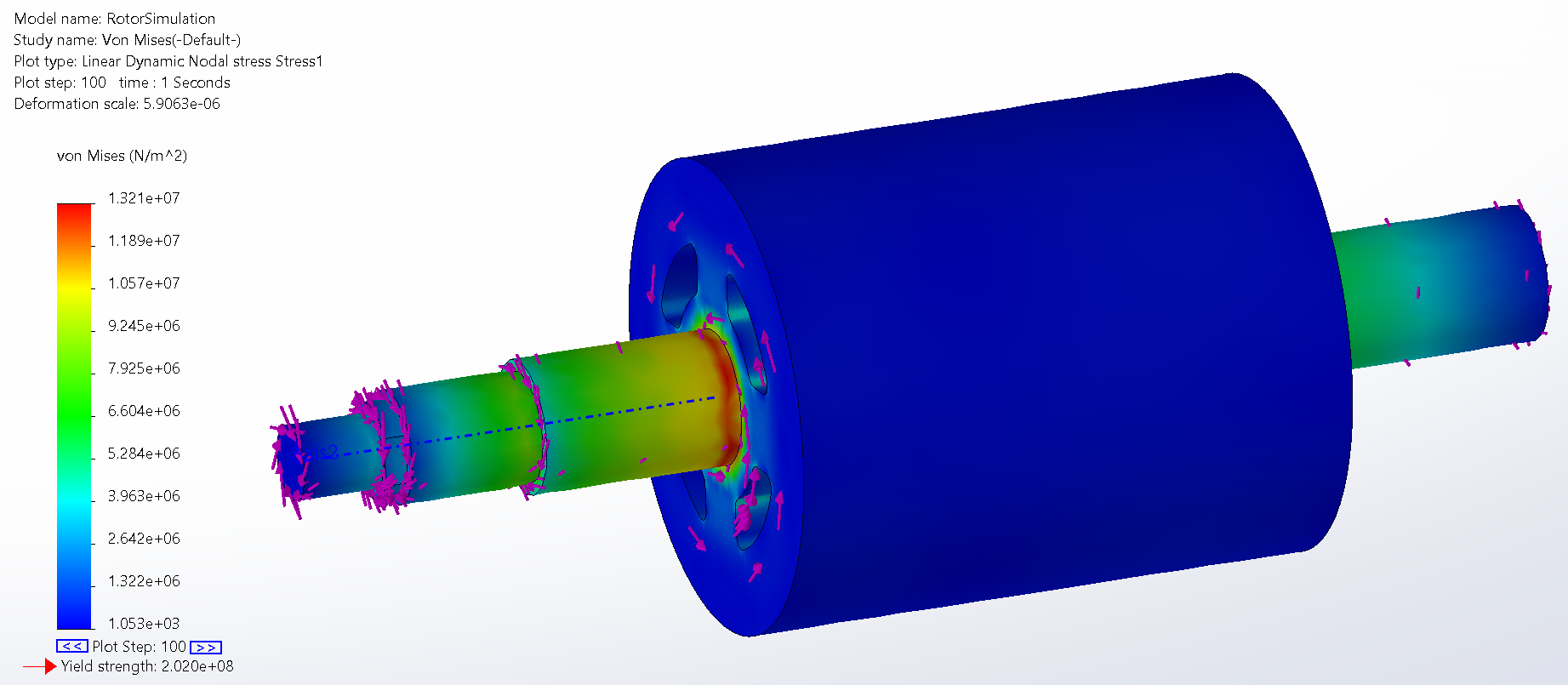
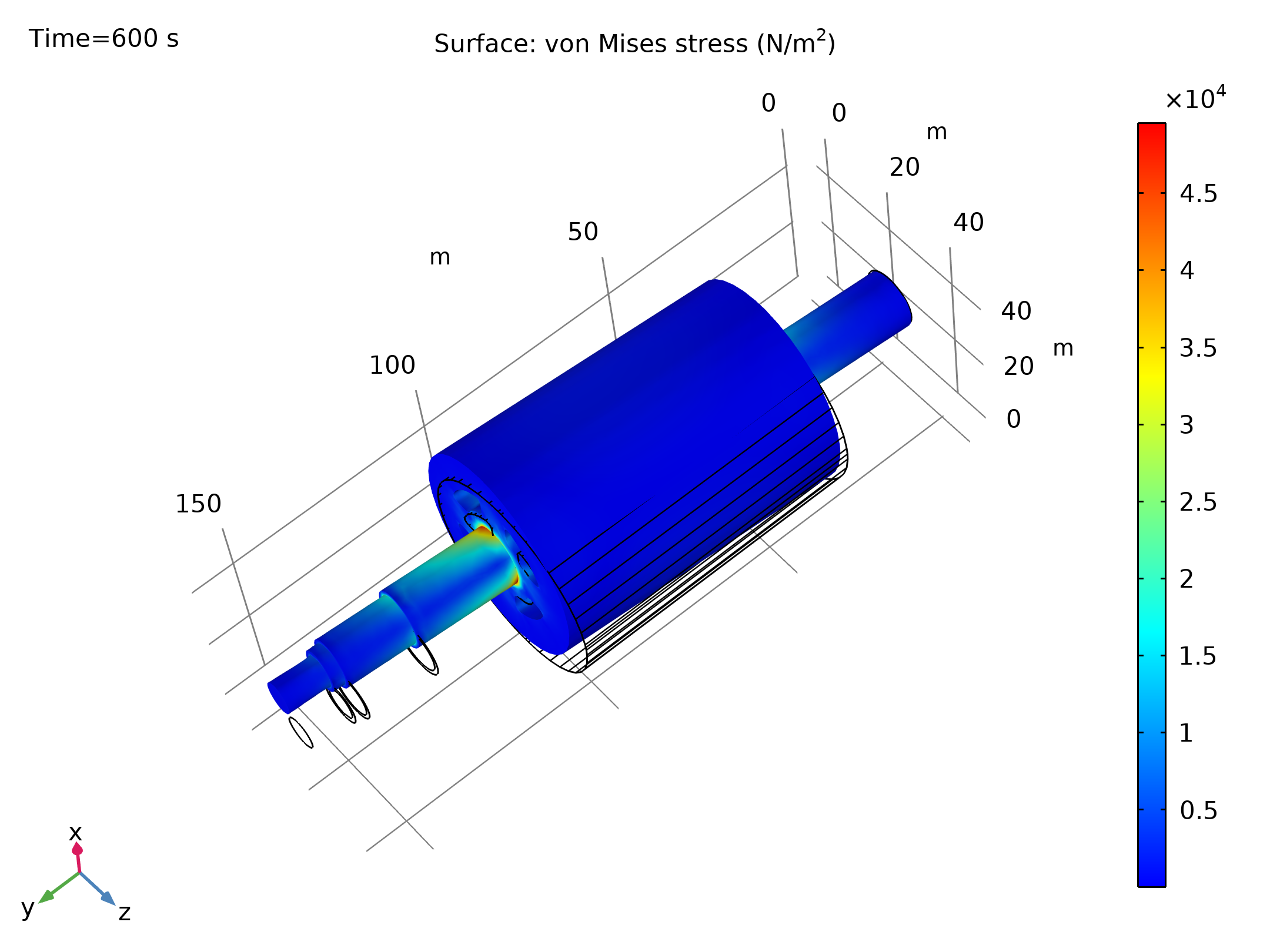
a. SolidWorks von Mises stresses b. COMSOL von Mises stresses


Future Work
April 1-4
Prepare deliverables and presentation
April 6
Engineering Design Day
Simulation
- Perform a heat transfer study to predict heat loss
- Perform a rupture study to test viability of topological and lightweighted designs
- Incorporate electromagnetic properties to improve heat study and topological optimizations
- Print motor core designs in Hiperco 50A
- Measure performance of new designs
Questions?
Contact Us